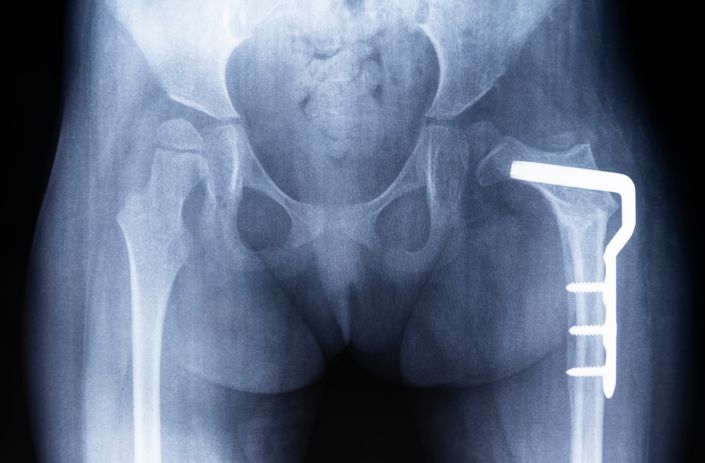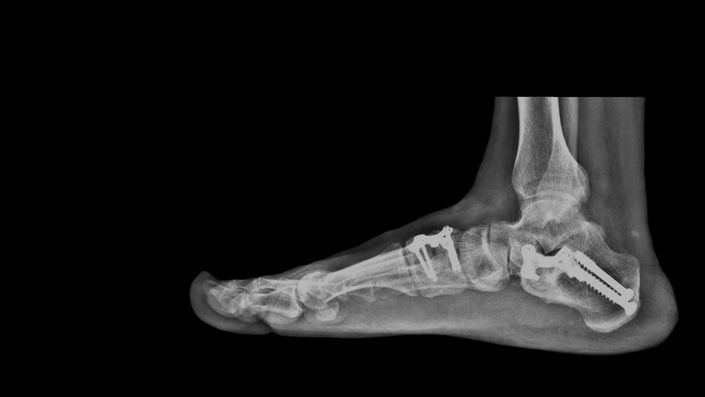Osteotomy refers to the surgical act of cutting a bone to change its shape, length or alignment. The orthopedic surgeons at Function use osteotomies to correct bones that are growing improperly due to neuromuscular disorders such as cerebral palsy. Below are some examples of osteotomies that are commonly performed in children with cerebral palsy to help them stay mobile and/or minimize the risk of pain and arthritis.
Hip Osteotomies:
The hip joint is formed by the top of the femur bone (the “ball”) and the bottom of the pelvic bone (the “socket”). Sometimes the tight muscles seen in children with cerebral palsy cause the hip joint to dislocate. When this occurs, the orthopedic surgeons at Function may cut the femur, the pelvis, or both and re-orient them to put the hip joint back in place. After the femur bone is cut, it is fixed in place with metal screws and plates which can be removed later or remain in the bone.

Foot Osteotomies:
Cerebral palsy can often result in deformities of the foot which make it difficult for children to walk effectively, or for those children who do not walk, even wear braces or shoes. The orthopedic surgeons at Function can cut one or more of the bones in the foot to re-align them and restore the foot to a healthier shape. Pins are usually used to hold the bones in place while they begin to heal and removed in the office after a few weeks, or other hardware may be used and left in place. The child may wear a short leg cast for six weeks to protect the bones before switching to a brace. Older children may benefit from fusion of bones of the foot.

Rotational Osteotomies:
Cerebral palsy can also affect the direction in which the child’s feet point when they walk. When braces do not improve this abnormal rotation in the leg, the orthopedic surgeons at Function can cut the thigh bone or shin bones and rotate the bone so that the foot points straight ahead. The bones are fixed in the new position with metal plates and screws and for the shin bone, a cast is worn for about six weeks.